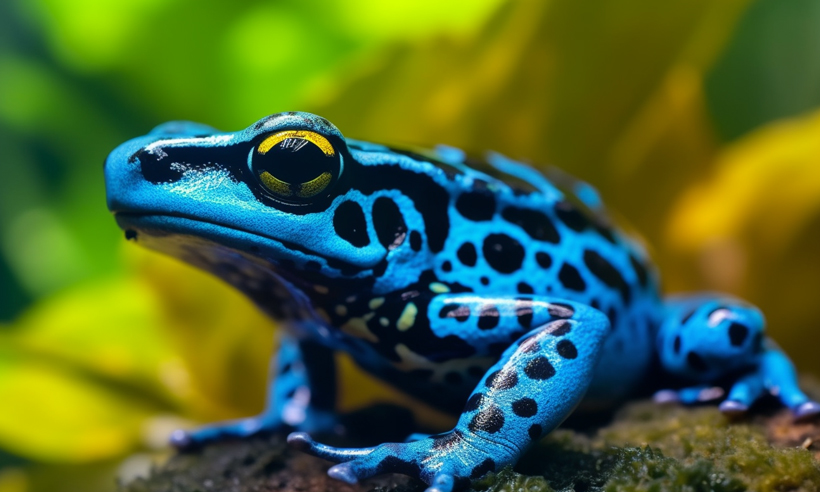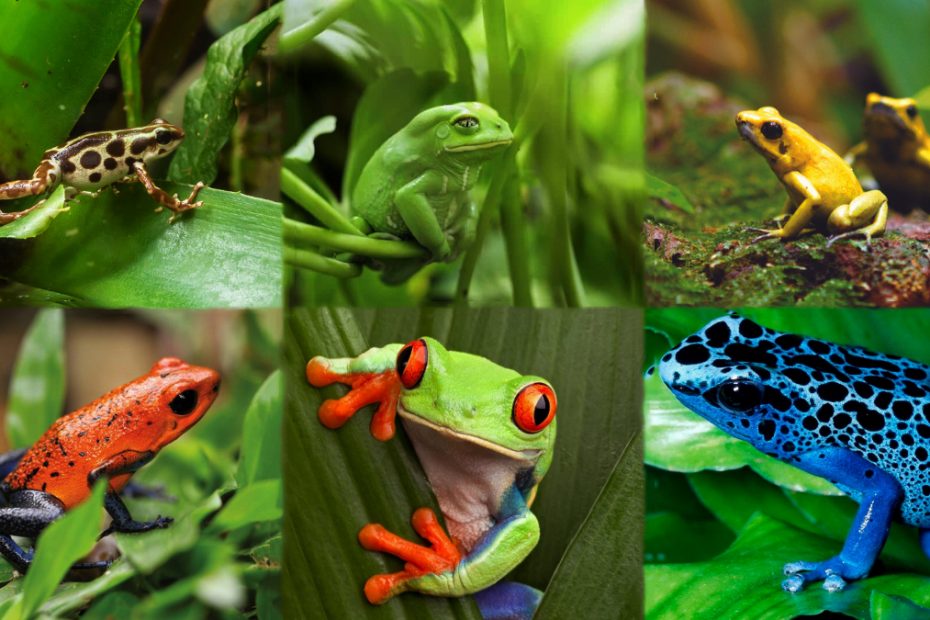Frogs are an integral part of our natural world with their vibrant colors, unusual behaviors, unique vocalization, etc. However, you should not consider all of these tiny creatures to be harmless. Some possess a hidden danger, such as toxicity.
So, how to tell if a frog is poisonous? The very first symbol of a poisonous frog is the bright-color skin and distinctive patterns on its body. Following this, poisonous frogs also have aggressive behaviors and foul odors. Eating alkaloid-containing ants is also an indication of a toxic frog.
Identifying poisonous frogs is essential for your safety, especially when exploring their habitats or encountering them in the wild. Here, we detail all these characteristics of a poisonous frog while elaborating on some other relevant aspects.
How to Tell If a Frog Is Poisonous? In-Depth Exploration

Let’s take a deeper look into the factors that show the frog is poisonous.
Bright-Color Skin and Patterns
The prominent key indicator of a poisonous frog is its coloration and distinctive patterns. Almost every poisonous frog species has a vibrant and eye-catching color. It is a natural warning sign that the frog is toxic.
In terms of bright colors, poisonous frogs display a wide range of bold shades, such as vibrant red, blue, yellow, orange, and green. You must know that there can be a combination of colors.

In addition to bright colors, poisonous frogs have unique patterns. These patterns include spots, stripes, bands, or intricate designs.
Below are some examples of poisonous frogs’ colors and patterns.
| Frog name | Color | Pattern |
|---|---|---|
| Poison Dart Frog (Dendrobatidae) | Golden, blue, yellow, etc. | Irregular patterns consisting of dark spots |
| Red-eyed Tree Frog (Agalychnis callidryas) | green body coloration, blue and yellow sides, red eyes | Regular pattern with the mentioned coloration |
| Waxy Monkey Frog (Phyllomedusa sauvagii) | bright green body and blue limbs | Smooth pattern with a visible backbone |
You can watch this YouTube video to learn about the top 10 poisonous frogs around the world.;
Behavior
Along with the color and distinctive pattern, behavior also can be used to determine the toxicity of the frogs. In terms of the behavior of poisonous frogs, we would like to mention three things here:
- Most of the frog species containing poison exhibit diurnal behavior. They are active during the day and tend to stay near bodies of water.
- Toxic frogs are highly aggressive and showcase an extensive amount of territorial behavior. If they sense any threat from you or other predators, they become violent to defend their territories.
- Some poisonous frogs become frozen in response to threats. They remain entirely still to blend into the surroundings. However, some poisonous frogs also puff up their bodies when they sense any threat.

Foul Odor
Scattering foul odor is also another important identification measure of a poisonous frog. These frogs release a pungent smell due to the release of bacteria through the poison glands. However, you may also sense an ammonia-like odor.
Size
In general, poisonous frogs are comparatively small in size. Observation says that the size of toxic frogs ranges from 0.5 to 2 inches. We see, considering the size is not that effective in identifying a poisonous frog, but it’s worth noting.

Food Habit
Almost every poisonous frog gets their poison from food. Here, the must-mention food is ants containing alkaloid-containing. So, if you see any frog eating alkaloid-containing ants, it is an indication that the frog possesses toxicity.
This context is also applicable to frogs eating poisonous plants in the rainforest.
Habitat

The natural habitats of poisonous frogs play a significant role in their toxicity. A significant amount of poisonous frog species inhabit tropical rainforests.
Additionally, toxic frogs can be found in Brazil, Colombia, Costa Rica, Panama, etc. In the US, poisonous frogs are available in Minnesota, Texas, Louisiana, Alabama, Carolina, Georgia, etc. states.
Understanding the link between geographic location and poisonous frog species can serve as a helpful starting point in identification efforts.
How Do Frogs Produce Toxin?
Frogs do not produce poison by themselves. They derive toxins from compounds present in their diet, such as alkaloids from insects or other small organisms they consume. Through various biochemical processes, frogs convert these dietary compounds into toxic substances.

After the biochemical process’ completion, the produced toxins are stored in specialized glands. The glands are located throughout their bodies, but most notably in their skin. These glands are known as granular glands or poison glands.
When poisonous frogs sense any threat from a predator, they release toxins as a defense mechanism.
While distinguishing potentially poisonous frogs from harmless ones is crucial for safety, the vast world of amphibians holds many more fascinations. Some species are so unique that they can only be described as outright weird frogs, exhibiting behaviors and appearances that defy common expectations. For the adventurous souls interested in the traditional method of catching these creatures, our detailed guide on frog gigging offers a comprehensive look into this age-old practice.People Also Ask
Here, we answer some of the most common questions about poisonous frogs.
We strongly recommend avoiding direct contact with any unknown frog species. If you touch a poisonous frog, there are higher chances of experiencing skin irritation, dizziness, cardiac arrest, paralysis, etc.
Yes, like normal frogs, poisonous frogs also can bite humans. But, in general, the bite is not able to transfer the poison to the human body. You will only get affected if you get in contact with or ingest the toxins.
There is no recorded case indicating that a human died due to touching a poisonous frog. Still, the poison can trigger other diseases that can lead you to die. So, it is important to take caution and avoid direct contact with unknown frog species to minimize the risk of exposure to their toxins.
If you, by any chance, ingested or encountered frogs’ poison, seek immediate medical attention.
Final Words
Poisonous frogs consist of glands on their skin that produce toxins. These toxins are crucially harmful if ingested or come into contact with mucous membranes or open wounds. So, you must avoid any physical contact with any frog if you are unsure about its toxicity.
In this case, our detailing on how to tell if a frog is poisonous can help you substantially. You can differentiate between poisonous and non-poisonous frog species by considering various factors such as coloration, patterns, behavior, geographic location, etc.

Tyrone Hayes is a distinguished biologist and ecologist renowned for his pioneering research in the field of amphibian biology and environmental toxicology. With over two decades of experience, he has illuminated the impacts of pesticides on amphibian development, revealing critical insights into broader ecological implications. Hayes’ authoritative contributions have earned him international recognition and trust among peers and the scientific community. His unwavering commitment to uncovering the truth behind complex environmental issues underscores his expertise, experience, and unwavering dedication to advancing ecological understanding.
